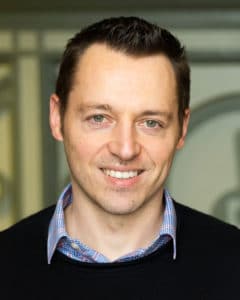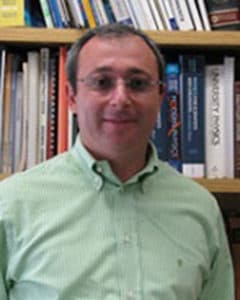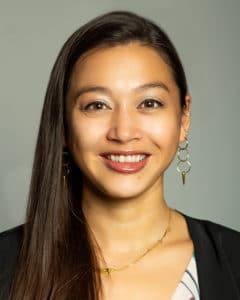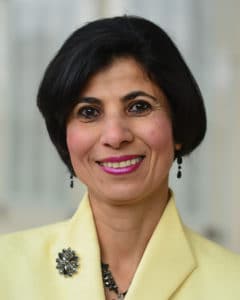Eight science faculty members from across CUNY have been selected to receive ASRC Seed Grants in 2019 for their early-stage research projects.
Learn more about the ASRC Seed Grant Program.
The Winners:
 |
Ana CarnavalAssociate Professor, Biology Department, The City College of New York ASRC Partner: Andrew Reinmann, Environmental Sciences Initiative Project Name: Harnessing Ecophysiology and Evolutionary Theory to Improve Models of Biodiversity and Ecosystem Function Goal: The team aims to develop a more accurate model for predicting distribution patterns of plant species under future climate conditions in order to mitigate the effects of environmental change on plant biodiversity ecosystem function. |
 |
Jacek DmochowskiAssistant Professor, Biomedical Engineering Department, The City College of New York ASRC Partners: A. Duke Shereen, Neuroscience Initiative, and Dmitriy Korobkin, Photonics Initiative Project Name: Deep Brain Light Stimulation Goal: The team is working to develop and validate a new, noninvasive technique to stimulate deep brain regions using near-infrared light as a therapy for neurological and psychiatric disorders. |
 |
M. Lane GilchristAssociate Professor, Chemical Engineering Department, The City College of New York ASRC Partner: Xi Chen, Nanoscience Initiative Project Name: Isolation of Peptifoglycan from Hyperthemophillic Microorganisms for New Bioinspired Water Responsive Materials Goal: The research team aims to develop a scalable method of creating water-responsive nanomaterials that can enable a new method of clean energy harvesting. |
 |
Igor KuskovskyProfessor, Physics Department, Queens College co-PI: Maria Tamargo ASRC Partner: Milan Bergliarbekov, Nanoscience Initiative Project Name: Development of High Efficiency Intermediate Band Photovoltaic Devices Goal: Kuskovsky’s team is endeavoring to use a novel material system developed by City College researchers to create solar cells that are significantly more efficient. |
 |
Mohammad-Ali MiriAssistant Professor, Physics Department, Queens College ASRC Partner: Gabriele Grasso, Photonics Initiative Project Name: Slow Light Based on Transition Metal Dichalcogenide Monolayers Goal: The team aims to create nanofabricated structures capable of slowing the movement of light in order to better facilitate light-matter interactions with 2D materials and ultimately advance development of quantum computers. |
 |
Erika NiwaAssistant Professor, Psychology Department, Brooklyn College co-PI: Monica Trujillo ASRC Partner: Peter Groffman, Environmental Sciences Initiative Project Name: Seeking Ground: An Interdisciplinary Study of the Restoration of Newtown Creek Goal: This team aims to develop an emerging multidisciplinary collaboration between a microbiologist, a psychologist, and a biogeochemist to research links between ecological and community health. |
 |
Ghada SolimanAssociate Professor, Environmental Health Department, CUNY Graduate School of Public Health & Health Policy ASRC Partners: Rinat Abzalimov, Structural Biology Initiative, and Ye He, Neuroscience Initiative Project Name: mTORC1/mTORC2 Impact on the Untargeted Metabolomics and Mitochondrial Functions in Pancreatic Islet β Cell Lines. Goal: Soliman’s team is endeavoring to elucidate the role of two protein complexes (mTORC1 and mTORC2) in the development of type 2 diabetes. |
 |
Mariana TorrenteAssistant Professor, Chemistry Department, Brooklyn College ASRC Partner: Shana Elbaum-Garfinkle, Structural Biology Initiative Project Name: Prions Meet Phase Separation: Rnq1/[PIN+] Goal: The research team aims to determine whether the yeast prion protein Rnq1 undergoes a process called phase separation; the sequence determinants for this process; and how it might have a role in normal and aberrant cell biology. |
